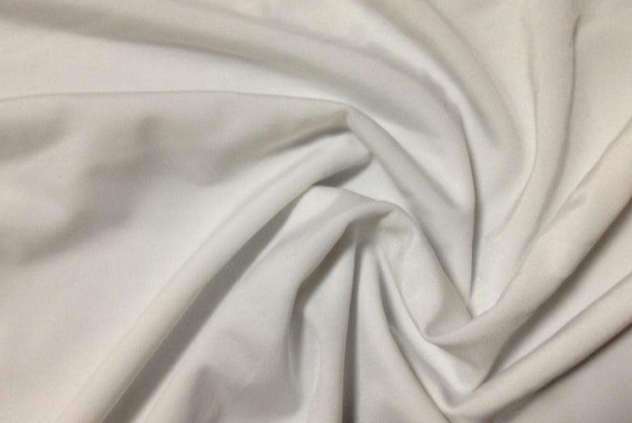Grasp the industry trend, layout of new carbon fiber materials
Viscose filament, also known as ice filament, has smooth and cool, breathable, antistatic, gorgeous dyeing and other characteristics, in the main textile fiber moisture content most in line with the physiological requirements of human skin, generally as a substitute for natural silk, used for high-end clothing and home textiles.
3.1. Viscose filament industry has a high concentration and an oligopoly pattern
Viscose industry belongs to high energy consumption and high pollution industry. Viscose industry is a typical labor-intensive industry, the production of environmental pollution, and there is a large amount of energy consumption. A single ton of viscose filament consumes 600 cubic meters of water and 10,000 KWH of electricity. At present, global viscose production is mainly concentrated in developing countries and regions. Viscose filament is a typical oligopoly supply pattern. At present, the global viscose filament supply is controlled by six enterprises in China and India. According to the "2021 viscose filament industry Project Business Plan" released by Xinsi Industry Research Center, as of 2021, the global total production capacity of viscose filament is about 281,000 tons, of which domestic enterprises account for 75%, and the total production capacity is 235,000 tons. Indian enterprises accounted for about 20.2%, and the production enterprises were mainly Century Rayon and Grasim. The domestic viscose filament industry is further clearing. In 2009, there are more than 10 domestic viscose filament production enterprises, to 2020 only 5, 2021, Jiujiang Shengjun silk 7,500 tons of viscose filament production capacity out of the market, the market concentration is further concentrated. CR3 in the viscose filament industry grew from 56% in 2009 to nearly 94% in 2021. Not only that, in September 2017, the Ministry of Industry and Information Technology began to implement the "viscose fiber Industry Standard Conditions (2017 version)", which prohibited the construction of new viscose filament projects.

3.2. Exports improved in the post-pandemic era
China is the world's most important exporter of viscose filament, and India is the world's largest consumer of viscose filament. According to the statistics of Baichuan Winfu, China's viscose filament exports account for about one-third of the total consumption. From 2017 to 2019, the export volume of viscose filament in China remained at more than 60,000 tons/year. In 2020, due to the impact of the global epidemic, the export volume of viscose filament fell to 55,400 tons. From January to November 2021, China's viscose filament production continued to decline, while the improvement of the epidemic situation in overseas markets prompted a significant increase in export demand. In the past five years, the overall price fluctuation range of viscose filament is 35,000-40,000 yuan/ton.
In 2016, the output of viscose filament was sharply reduced under the influence of supply-side reform, and viscose filament ushered in a boom period. Filament prices rose from 3.72 yuan/ton in early August to 40,100 yuan/ton at the end of March 17. Then the downstream Spring Festival production reduction, filament inventory accumulation, the price fell quickly. Since Q4 2020, the rapid increase in export demand has driven the price of viscose filament up, and the increase in energy prices has formed the cost support, and the price of viscose filament has continued to rise from 36,000 yuan/ton in October 2020 to 40,800 yuan/ton in December 2021, and the profitability has continued to improve.
3.3. The company's leading position in viscose filament business continues to strengthen
The company is one of the world's high-quality viscose filament suppliers, product quality reputation at home and abroad. In recent years, the company has seized the opportunity of industry capacity clearance, concentrated resources to further expand the production capacity of viscose filament, and filled the gap caused by the withdrawal of relevant enterprises. By 2021, the company has a viscose filament production capacity of 80,000 tons/year, with domestic production capacity accounting for 34.0% and global production capacity accounting for about 26.4%. In addition, the company currently has 15,000 tons of differential continuous spinning filament project (Phase II) is under construction, after the completion of the company's annual production capacity of viscose filament will increase by 10,000 tons to 90,000 tons, and the leading position in the industry will be further consolidated.
- EMERSON
- Honeywell
- CTI
- Rolls-Royce
- General Electric
- Woodward
- Yaskawa
- xYCOM
- Motorola
- Siemens
- Rockwell
- ABB
- B&R
- HIMA
- Construction site
- electricity
- Automobile market
- PLC
- DCS
- Motor drivers
- VSD
- Implications
- cement
- CO2
- CEM
- methane
- Artificial intelligence
- Titanic
- Solar energy
- Hydrogen fuel cell
- Hydrogen and fuel cells
- Hydrogen and oxygen fuel cells
- tyre
- Chemical fiber
- dynamo
- corpuscle
- Pulp and paper
- printing
- fossil
- FANUC
- Food and beverage
- Life science
- Sewage treatment
- Personal care
- electricity
- boats
- infrastructure
- Automobile industry
- metallurgy
- Nuclear power generation
- Geothermal power generation
- Water and wastewater
- Infrastructure construction
- Mine hazard
- steel
- papermaking
- Natural gas industry
- Infrastructure construction
- Power and energy
- Rubber and plastic
- Renewable energy
- pharmacy
- mining
- Plastic industry
- Schneider
- Kongsberg
- NI
- Wind energy
- International petroleum
- International new energy network
- gas
- WATLOW
- ProSoft
- SEW
- wind
- ADVANCED
- Reliance
- YOKOGAWA
- TRICONEX
- FOXBORO
- METSO
- MAN
- Advantest
- ADVANCED
- ALSTOM
- Control Wave
- AB
- AMAT
- STUDER
- KONGSBERG
- MOTOROLA
- DANAHER MOTION
- Bently
- Galil
- EATON
- MOLEX
- Triconex
- DEIF
- B&W
- ZYGO
- Aerotech
- DANFOSS
- KOLLMORGEN
- Beijer
- Endress+Hauser
- MOOG
- KB
- Moxa
- Rexroth
- YAMAHA
- Johnson
- Westinghouse
- WAGO
- TOSHIBA
- TEKTRONIX


Email:wang@kongjiangauto.com



































































































































